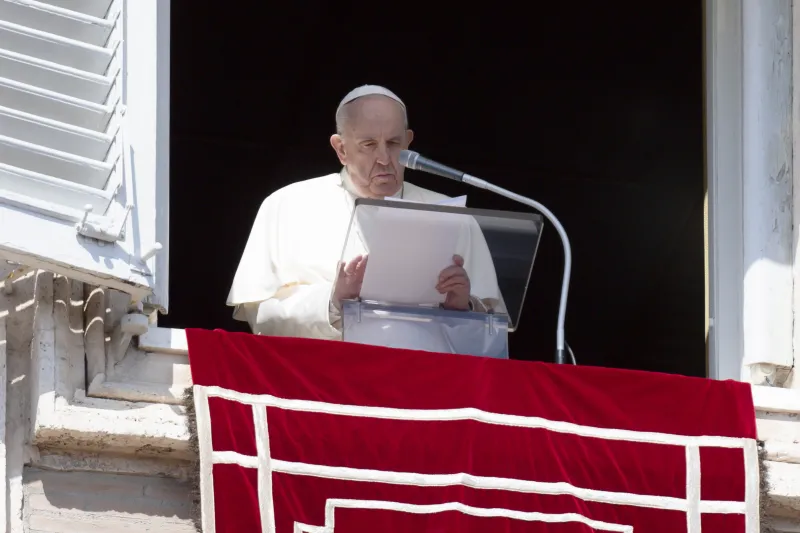
Padua, Italy, Jun 13, 2017 / 04:00 pm (CNA/EWTN News).- As the Church celebrates St. Anthony of Padua, his widespread popularity can be traced to his efforts at reaching out as a neighbor to all peoples, according to the rector of the basilica where the saint’s body rests.
“The devotion to the Saint of the Peoples is truly universal perhaps because he himself desired to consider all the world his as his home,” Father Oliviero Svanera, rector of the Basilica of St. Anthony of Padua, told CNA.
“He was Portuguese by birth, he went to Morocco to spread the faith, he landed in Sicily by shipwreck, then he went back up the Italian peninsula all the way to Assisi and joined the friars of St. Francis, who sent him all the way to France.
Once St. Athony returned to Italy he was appointed provincial superior and served in Padua, where he died in 1231.
“It is told that he would speak one language made of a thousand accents but which was understandable to all,” Fr. Svanera said. “As such, he was a neighbor to all: to the poor, to people in difficulty, to the sick. In this, his being ‘brother of all,’ is perhaps his universality, something that renders him a friend of all the peoples of the world, beyond nationality, culture, and even religions, given that St. Anthony is respected even by those who do not profess the Catholic faith.”
St. Anthony was born as Fernando Martins in Lisbon around 1195, and when he was 15 entered the Abbey of St. Vincent with the Canons Regular of St. Augustine, and he was ordained a priest.
In 1220 he was moved by seeing the relics of five Franciscan missionaries who had been martyred in Morocco. He was allowed to leave the Augustinians to join the Order of Friars Minor, where he took the name Anthony. He worked as a preacher and laid the foundations of Franciscan theology.
He was canonized in 1232, only a year after his death, by Gregory IX, who had heard him preach and called him the “Ark of the Testament.”
It was also in 1232 that construction of the basilica which houses St. Anthony’s body was begun. It was finished at the beginning of the 14th century.
Please find below more from CNA’s interview with Fr. Svanera, rector of the basilica:
For the feast day, there exists the famous Tredicina in honor of the saint: What does this consist of?
By the word “Tredicina” is meant the thirteen days of meditation and spiritual preparation for the solemnity of the saint, that is, from May 31 to June 13. Every day those devoted to St. Anthony invoke the intercession of the saint through a particular prayer, the Tredicina to Saint Anthony specifically, to entrust themselves to the mercy of God the Father. These are the days in which the basilica becomes the goal of pilgrims, both individuals and those organized in groups, and our sanctuary becomes truly universal, as in these days of veneration and prayer there are tens of thousands of pilgrims who come here from every country of the world.
Another tradition is the “Bread of St. Anthony.” What is the significance of this tradition?
In a word, the “Bread of St. Anthony” is synonymous with charity. The birth of this tradition has its roots in one of the “miracles” of the saint, that of Tommasino, a baby of twenty months who drowned in a washtub. The desperate mother invoked the help of the saint and made a vow: If she would obtain this grace, she would give to the poor the child’s weight in bread. And the little one returned miraculously to life. This miracle has given origin to two Antonian works in faithfulness to the spirit of St. Anthony: Firstly, l’Opera Pane dei Poveri (the Bread Work of the Poor), the Antonian organization which in Padua works to bring bread, and other necessities to people in difficulty, and next the Caritas Antoniana Onlus (Antonian Charity not-for-profit), the body of friars of the saint who in 2016 supported 124 development projects in 40 countries of the world, for a total of €2.64 million ($2.96 million).
St. Anthony was a great preacher who practiced charity: What can this teach us about a “Church that goes forth”?
The gospel and charity are the two hinges of the lesson from St. Anthony. His preaching was always capable of provoking the heart of everyone. And this too is thanks to his exemplary life and his humility, which he learned from Most Holy Mary, to whom he was profoundly devoted. St. Anthony proclaimed the gospel which conquers the temptation of power, the temptation of pride, the temptation, Pope Francis would say today, of worldliness, of how much worldliness there is and which brings us to act out life as in a play, or to want to give an appearance. Through his love, St. Anthony knew to stoop for the other (refugee, migrant, unemployed, alone, sick, imprisoned, marginalized, poor) and to take care of him. We will thus be effective Christians of a Church which goes forth if, like St. Anthony, we manage to go forth from ourselves to preach Christ crucified, following him with a style of humility, of true humility, a humility full of love.
If you value the news and views Catholic World Report provides, please consider donating to support our efforts. Your contribution will help us continue to make CWR available to all readers worldwide for free, without a subscription. Thank you for your generosity!
Click here for more information on donating to CWR. Click here to sign up for our newsletter.





Leave a Reply